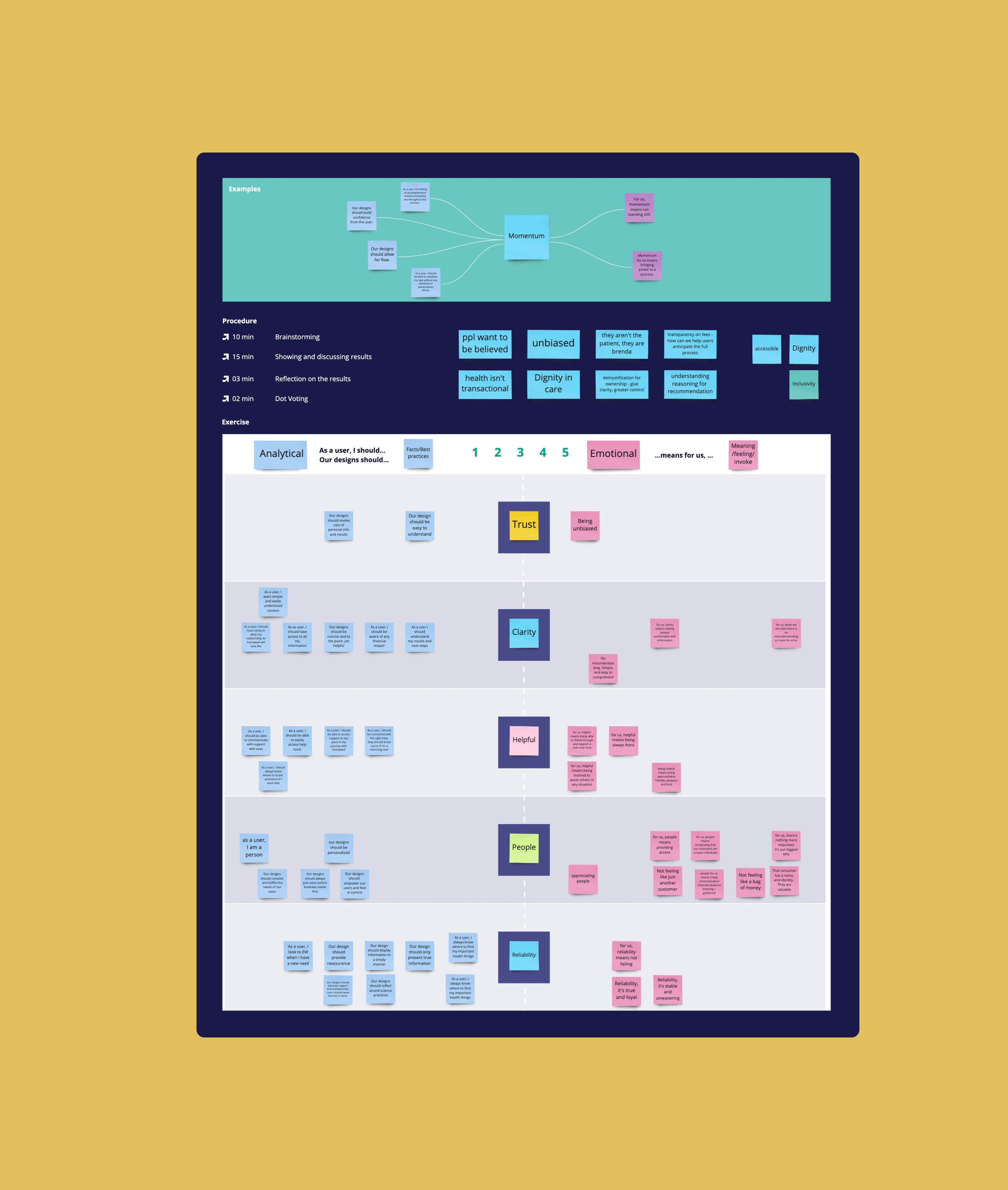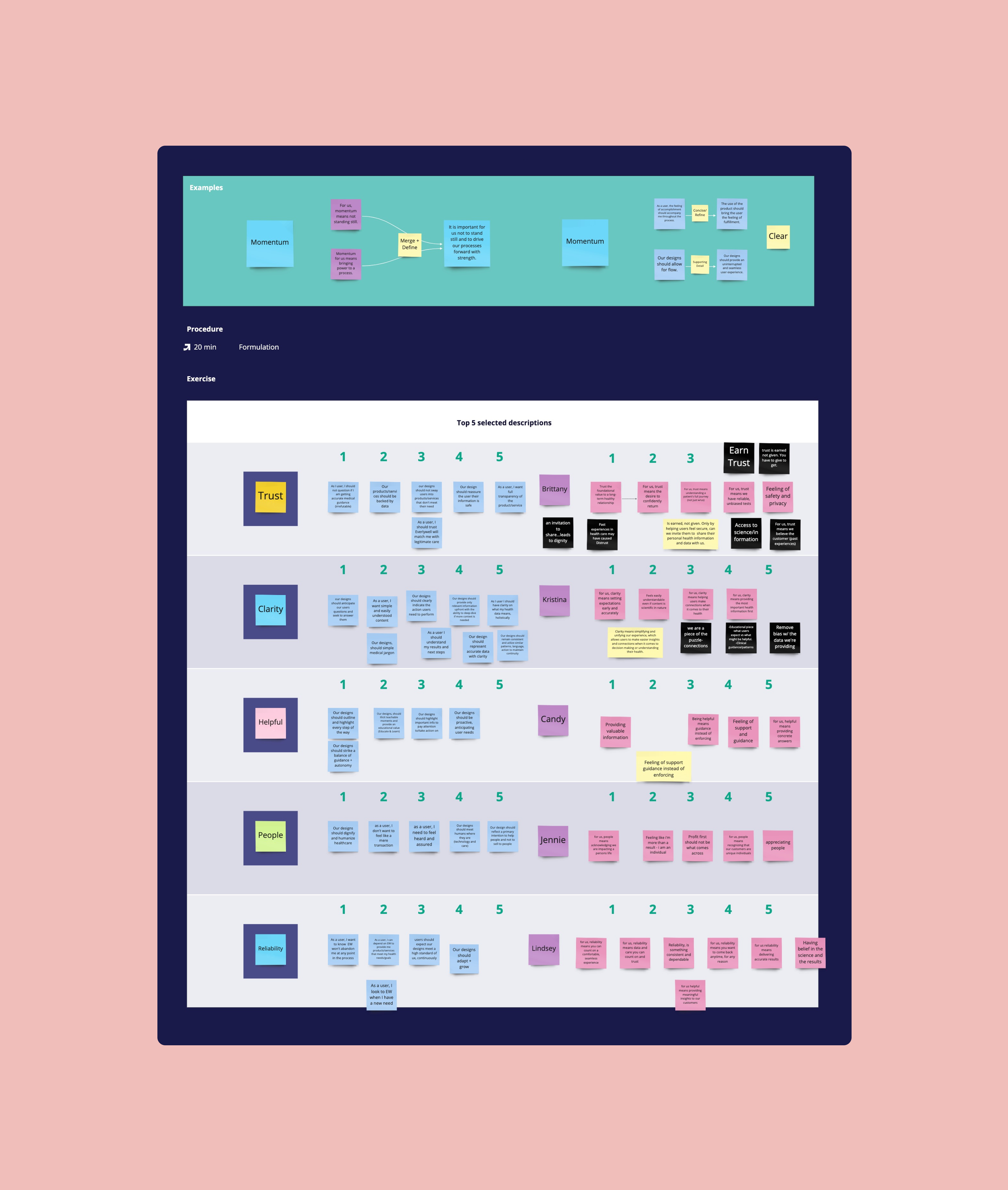Design Principles
Design principles help to keep important values front and center in the design process. When successfully composed and used, design principles ensure consistency in decision making across designers and teams, removing the need to debate simple tradeoffs and letting designers worry about complex problems. That's why I took initiative and held a 2-day workshop to create our own design principles at Everlywell.
Workshop Agenda
Day 1
Icebreaker
Exercise 1: Inspiration Station
Exercise 2: User Insights
Exercise 3: Keywording
Day 2
Icebreaker
Exercise 4:Mind Mapping
Exercise 5: Formulation
🪄 Magic Copy Revision ✨
Exercise 1: Inspiration Station
Knowing the “Why” behind the workshop is essential. I wanted Product Design and Research to see examples of design principles from top companies or favorite brands.
We spent roughly 10 minutes researching and collecting, then another 10 sharing the principles that stood out and connected with us the most.
Exercise 2: User Insights
As product designers, we always have our user's needs and wants at the forefront of our designs, so with our design principles, this should be no different.
For this next section, I partnered with our Research team to provide top user insights about our current product/services to synthesize this information further and provide additional guidance.
Exercise 3: Keywording
The goal of this exercise is to discover the principles that are prevalent in the organization. To do this, everyone worked independently to write down what they think are the most important keywords that best describe the organization allowing the team to put what they learned in the previous 2 exercises into action.
After everyone finished, we affinity-mapped our keywords into groups of similar themes and voted on the top 5 keywords that resonated the most to move forward into the next exercise.
Exercise 4: Mind Mapping
We continued working with the top five keywords from the previous exercise and defined what each word meant to us, as an organization, and our users. To do this, we create sentences that describe the word in more detail. Each sentence consists of two sub-sentences with a corresponding keyword in the middle.
The sub-sentences on the left side should start with "as a user, I should...," and "Our design should..." These sub-sentences should be more analytical, devised from facts or industry best practices.
On the right side is the partial sentence: "[Keyword] means for us..." These sub-sentences should be more emotional and describe what the keyword invokes or makes us feel.
Exercise 5: Formulation
It was time to formulate the results of mind mapping as a team. We voted and took the top 2 to 3 sentences from both sides to create the first draft of our design principles.
I wanted our design principles to be iteratively refined and as clearly apt as possible. I took my best attempt at crafting the final copy and afterward presented our new design principles to the team.







